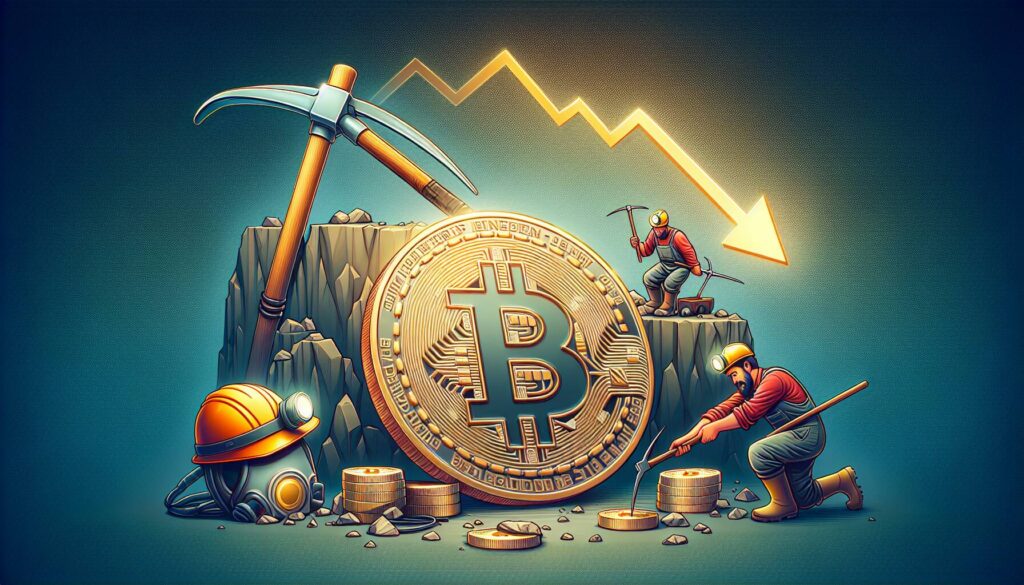This week, the discussion around stagflation—a term evoking the troubling combination of stagnation and inflation—has crept into investor conversations, particularly in light of recent economic shifts and global tensions. Despite an atmosphere of caution at the World Economic Forum in Davos earlier this year, where the term remained largely unspoken, market movements suggest that investors are increasingly acknowledging the risks associated with stagnating growth and rising prices.
As evidence of this growing concern, Goldman Sachs has reported that its “stagflation basket,” which focuses on commodities and defensive sectors, has surged nearly 20% year-to-date, starkly contrasting with the S&P 500’s decline of 4% and Bitcoin’s 10% drop. This divergence highlights a shift in investor strategy, favoring resilience in uncertain times.
“It does seem like stock and bond prices are adjusting for lower growth and higher inflation,” said Noelle Acheson, author of the Crypto Is Macro Now newsletter.
Stagflation has been a low murmured worry since early 2022, but market reactions have begun to reflect these anxieties as inflationary pressures mount and trade tensions escalate, particularly following recent tariffs imposed by former President Trump. Notably, forward-looking inflation metrics have surged to multi-year highs, indicating growing fears of trade-driven price increases on consumer goods. Meanwhile, signals of a potential recession are appearing in the yield curve, with key sections inverting, and GDP trackers indicating a slowdown in economic activity.
Interestingly, this could present a golden opportunity for Bitcoin, often referred to as “digital gold,” which traditionally thrives amidst economic uncertainty. Yet, the cryptocurrency has struggled to establish its position as a safe haven asset. In fact, recent trends show a stronger correlation between Bitcoin and U.S. stock prices, suggesting that in this uncertain environment, BTC has become more of a risk asset in the short term.
“BTC is short-term a risk asset… long-term, it’s a safe haven given its verifiable hard cap and global utility,” Acheson elaborated.
Some market analysts, however, challenge the prevailing interpretation of economic indicators. Markus Thielen, founder of 10x Research, suggests that what’s perceived as stagflation might actually be a temporary spike in commodity demand due to tariffs—an effect that could diminish in the months ahead. His view hints at the potential for a positive turnaround should the Federal Reserve adopt a more dovish stance. Following Trump’s recent pause on escalating tariffs, market sentiment could shift, paving the way for a rebound in risk assets, including Bitcoin.
As we navigate through this intriguing juncture in the economy, the balance of fear and opportunity continues to shape the landscape for both traditional and digital assets, keeping investors on their toes amid shifting tides.

Understanding Stagflation and Its Economic Impact
Stagflation is becoming a rising concern among investors, with implications for various markets including cryptocurrencies like Bitcoin and traditional assets. Here are the key points to consider:
- Definition of Stagflation:
- Stagflation is characterized by high inflation combined with economic stagnation, rising unemployment, and declining economic activity.
- Market Reactions:
- Goldman Sachs’ “stagflation basket” has risen nearly 20% this year, focusing on commodities and defensive plays.
- In contrast, the S&P 500 has dropped 4%, and Bitcoin has decreased by 10% this year.
- Economic Indicators:
- Forward-looking inflation metrics are reaching multi-year highs, indicating fears of a trade war’s impact on consumption.
- An inverted yield curve in the Treasury market signals potential recession concerns.
- Bitcoin’s Role:
- Bitcoin’s correlation with U.S. stocks has strengthened, questioning its position as a ‘digital gold’.
- Despite current market behavior, some analysts believe Bitcoin remains a long-term safe haven asset due to its capped supply and utility.
- Potential Market Dynamics:
- Uncertainty regarding trade policies and the Fed’s decisions could influence asset performance in the near future.
- A dovish stance from the Fed could improve sentiments towards risk assets, including cryptocurrencies.
- Investor Outlook:
- Educational efforts about cryptocurrency and the establishment of favorable regulatory frameworks may boost institutional investments in crypto over time.
- Market misinterpretations regarding stagflation conditions may present investment opportunities or risks.
“Recent comments from Trump suggesting a potential softening of aggressive trade policies could set the stage for a rebound in growth-oriented assets.” – Markus Thielen
Understanding stagflation and its implications can help individuals and investors make informed decisions in a fluctuating market landscape. Staying aware of economic indicators and market dynamics is crucial for navigating potential risks and opportunities.
Stagflation: A Double-Edged Sword in Today’s Economic Landscape
The recent discourse surrounding stagflation—an unsettling combination of stagnation and inflation—has taken center stage in financial circles. Whispers of this economic phenomenon, long avoided in influential forums like the World Economic Forum in Davos, are gaining traction as the impact of trade wars and tariffs looms large. Investors have shifted their focus, demonstrating a keen interest in stagflation-linked strategies, especially after Goldman Sachs’ “stagflation basket” reportedly climbed by nearly 20% this year. In stark contrast, the S&P 500 registered a decline of 4%, and bitcoin saw a drop of 10%. As inflation metrics soar and recession signs pop up in economic indicators, the question arises: can bitcoin truly be expected to serve as a safe haven amidst uncertainties?
One of the principal advantages that stagflation-linked strategies hold is their ability to hedge against rising costs while navigating turbulent economic waters. Defensive sectors like healthcare can thrive when deregulation promises short-term gains, as they attract investments looking for stability despite broader market volatility. However, relying heavily on such strategies can also mask systemic weaknesses in the market, creating complacency among investors. The overwhelming focus on commodities, for example, may lead to stagnated growth elsewhere, particularly in innovative sectors like technology, which could prompt investors to reconsider their risk tolerance.
Interestingly, the cryptocurrency landscape experiences quite the juxtaposition. Bitcoin, once hailed as digital gold, faces skepticism now more than ever. Its newfound correlation with equities suggests that during uncertain times, it may not function as a true safe haven— complicating the narrative for those who stake their financial future on its resilience. As Noelle Acheson pointed out, while bitcoin has intrinsic long-term value, its current perception as a risk asset complicates matters for investors seeking safety amidst inflation and potential economic decline.
This scenario could bring two main groups to the forefront: conservative investors and those with a more aggressive risk appetite. Conservative investors may find comfort in the outperformance of commodities and defensive stocks, leading them to flock away from volatile assets like bitcoin in pursuit of stability. Meanwhile, more risk-tolerant individuals may see this as an opportune moment to bet against the prevailing pessimism surrounding crypto assets, in anticipation of a market correction as conditions stabilize. Nevertheless, if the anticipated dovish signals from the Fed materialize, there’s potential for renewed interest in growth-oriented assets like bitcoin, which could lead to either a major opportunity or a substantial setback for investors depending on the broader economic context.
As the narrative unfolds, it’s clear that navigating the stagflation landscape requires not just a reflexive response but a calculated approach. It presents a unique opportunity for those aligned with defensive strategies while potentially creating friction for innovative sectors grappling with uncertainty and heightened risks.
















